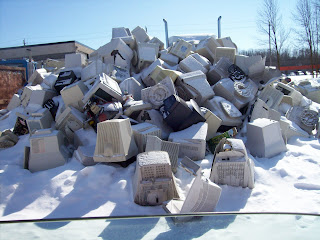

This post reflects on my thoughts and opinions of the work by Prof Mitra. The title of the paper is Acquisition of computing literacy on shared public computers: Children and the "hole in the wall".
This paper is about the acquisition of computer literacy in children in the age group of 6-14 years. The hypothesis devised for this research is, "if given appropriate access and connectivity, groups of children can learn to operate and use computers with none or minimal intervention from adults".
This is actually my reflection on the paper done by Sugata Mitra, Ritu Dangwal, Shiffon Chatterjee, Swati Jha, Ravinder S. Bisht and Preeti Kapur.
The title of the paper is Acquisition of computing literacy on shared public computers: Children and the "hole in the wall". This paper is about the acquisition of computer literacy in children in the age group of 6-14 years. The hypothesis devised for this research is, "if given appropriate access and connectivity, groups of children can learn to operate and use computers with none or minimal intervention from adults".
Rural places in India are actually the setting of this remarkable approach. According to Mitra 2004), "in independent studies conducted at Madangir, New Delhi, three organizations concluded that about 6,000 out of a total of 9,000 children in the area were now computer literate."
what a great achievement I would say...
This paper is actually telling us that children can learn on their own if given the right ingredients. The MIE is actually stands for Minimally Invasive Education.
From my understanding when reading the paper, I learned that by just giving the correct and conducive learning environment, it will motivate the students to learn.
"Any learning environment that provides an adequate level of curiosity can cause learning among groups of among groups of children. Children's desire to learn, along with their curiosity and peer
interaction, will drive them to explore the environment in order to satisfy their
inquisitiveness. As the children explore their environment, they relate their new experience
with their previous experience and thereby new learning takes place".
(Frontline World, 2002; Education Guardian, 2000;
Businessweek Online, 2000; Mitra, 2000; Mitra 2003;
van Cappelle, Evers & Mitra, 2004; Wullenweber, 2001)
In my opinion, the government should take this research as a model. This is because our country is also a bit behind when it comes to education in the rural areas.
I believe that by implementing this approach, it will help the students a lot.
We cannot deny the fact that there are still many children in Malaysia who still cannot read even though they are already in secondary school. It is so sad..
We know that our education system is trying its best to improve on the quality of education in our country.. For example, the government is now making education free for everyone by providing free education. Therefore, they also need to realize and actually go to the schools which are situated in the rural areas and see what it really happening.
One of the true scenario which is happening in schools nowadays is that the teachers are not really using the facilities given. What a waste i would say...
No comments:
Post a Comment